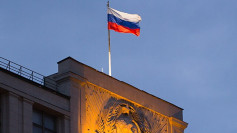The United States is nearing a pivotal agreement to supply Ukraine with Joint Air-to-Surface Standoff Missiles (JASSM), a move that could significantly alter the dynamics of the ongoing conflict. However, Ukrainian forces will need to exercise patience as the delivery of these advanced munitions may take several months due to technical and logistical preparations, according to U.S. officials familiar with the negotiations.
Sources close to the discussions have indicated that the inclusion of JASSMs in a forthcoming weapons package is anticipated to be announced this autumn. While the decision is not yet finalized, the potential impact of these missiles on the strategic landscape of the war is substantial. The JASSM, known for its precision and stealth capabilities, could extend Ukraine's strike range deep into Russian territory, altering how both sides manage their military strategies.
The JASSM is a long-range cruise missile manufactured by Lockheed Martin Corp. It is equipped with a powerful 1,000-pound warhead and has a range of approximately 230 miles for older models. A more advanced variant of the missile can reach distances exceeding 500 miles. The missiles are designed to be stealthy, making them difficult to detect on radar, and can be programmed to fly low and evade air defenses. The precision of the JASSM is enhanced by an infrared imaging seeker, which allows for accurate targeting within about 10 feet of the intended impact point.
Military analysts suggest that the introduction of JASSMs could force Russian forces to reposition their staging areas and supply depots further from the frontlines, complicating their ability to sustain offensive operations. Such a shift could potentially provide Ukraine with a strategic advantage by enabling it to target critical infrastructure and military assets deeper inside Russia.
The U.S. officials involved in the discussions have revealed that efforts are underway to adapt the JASSM for use with Ukraine's current fleet of non-Western fighter jets. Ukraine operates Soviet-era MiG-29, Su-24, and Su-27 jets, and integrating the JASSM with these aircraft could enhance their combat effectiveness. However, the specifics of which jets will be capable of deploying the JASSM have not been disclosed.
Despite the promising capabilities of the JASSM, the U.S. has been cautious about providing weapons that can strike deep into Russian territory. This hesitance is rooted in concerns that such actions could escalate the conflict further, potentially drawing NATO countries into direct confrontation or provoking a severe retaliatory response from Moscow.
The potential delivery of JASSMs also underscores the broader debate regarding the limitations on U.S. military aid to Ukraine. Providing these missiles may increase pressure on Washington to lift restrictions on how Kyiv can employ U.S. weaponry. These restrictions have been imposed to prevent further escalation of the conflict and to avoid provoking a broader international crisis.
The current plan is for the missiles to be delivered to Ukraine over several months, allowing time for necessary adjustments and technical integrations. The exact timing and quantity of the missiles to be provided are still under discussion, and further details are expected in the coming weeks.
As Ukraine continues to face intense pressure from Russian forces, the potential acquisition of JASSMs represents a significant development in its quest for advanced military support. The addition of these missiles could not only bolster Ukraine's defensive capabilities but also alter the strategic calculations of both sides in the conflict.
George William Herbert from the Middlebury Institute of International Studies at Monterey emphasized the strategic significance of the JASSM. "The JASSM's capabilities make it a formidable weapon system. Its stealth features and precision targeting could prove crucial in altering the dynamics of the conflict," Herbert noted. "Carefully planned missile flight paths would likely make the JASSM effective across a wide range of operational scenarios."






